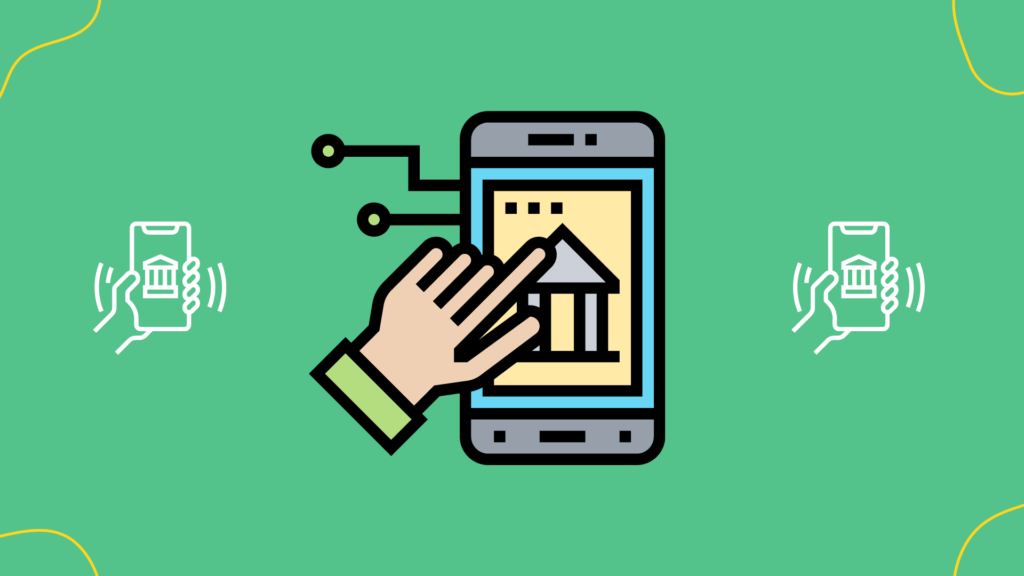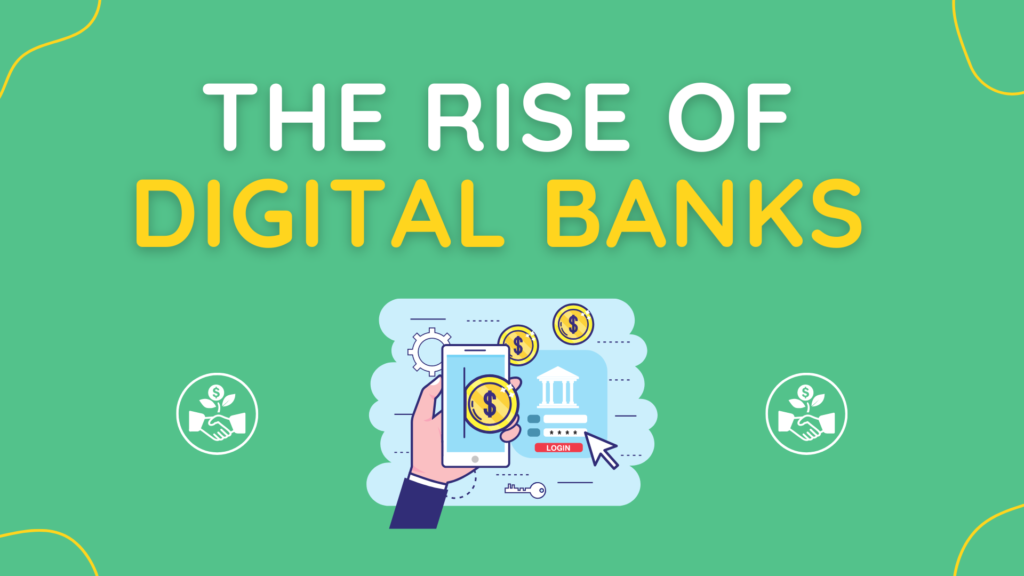
Sammie Ellard-King
I’m Sammie, a money expert and business owner passionate about helping you take control of your wallet. My mission with Up the Gains is to create a safe space to help improve your finances, cut your costs and make you feel good while doing it.

Quickfire Roundup:
The banking industry has changed and the new age is here. The rise of digital banks in the UK and the rest of the world has been monumental.
When was the last time you physically walked into a brick-and-mortar bank location?
If you are like most people, it has probably been a while, and if you are under thirty, it’s entirely possible you never have and never will.
The revolution has begun, and the rise of online digital banks in the past few years has been humungous.
UK challenger banks (small digital banks) are springing up all over the place, and it seems every time I glance up on the tube, there’s another ad luring me in to sign up.
Digital banks in the UK and all over the world are taking on the traditional banks using app-based technology, artificial intelligence, excellent customer service and seriously funky branding to try and convince people to join. And it’s working!
You wouldn’t think it when walking down a high street because you still see the same banks lining the boardwalks. However, in 2021 alone, 736 bank branches closed their doors for good. Why? Because the challenger banks are stealing customers left, right and centre.
There are now over 196 million people in the US using a digital-only bank.
You wouldn’t think it when walking down a high street because you still see the same banks lining the boardwalks. However, in 2021 alone, 736 bank branches closed their doors for good. Why? Because the challenger banks are stealing customers left, right and centre.
This number is said to be set to rise by anywhere from 5-10% in the next five years. In the UK 1 in 4 adults (14 million people) are now using digital banks which has grown threefold since 2019.
Have you ever seen the American cinema classic film It’s a Wonderful Life?
George then meets his guardian angel, who shows him what the town would look like if George had, in fact, never been born.
Because none of the loans in the town had been approved by the good-natured banker, the quaint little town was a run-down dump full of seedy nightclubs, alcoholic men and ladies of ill repute. This was the 1940’s after all.
Most, if not all, traditional banks now have smartphone apps that allow their customers to do almost all banking tasks from anywhere with an internet connection.
However, these banks have been forced to stay ahead of the game, investing heavily in technology to keep up and most only opt to keep their physical locations for the presence being on the high street provides.
Neo Bank is the term used to describe a new class of banks that exists solely online. These banks have no physical branches, and customers usually access their accounts through a smartphone app.
While this may seem like only a convenience, in many developing markets throughout the globe, traditional banks have yet to find a way to provide value to their customers like they do in the developed world.
Nubank in Brazil is one such example of a Neo Bank. Nubank was founded by a Stanford engineering grad in the United States who spent the first decade of his life amidst the drug wars in Medellin, Colombia.
While in grad school, he was recruited by a venture capital firm to scout Brazil for potential startup investment opportunities. He couldn’t find any because they were all hampered by Brazil’s lousy banking system, and thus his idea was born.
Digital Banks in the UK
The Neo Banks of the developing world were born out of necessity. Here in the UK, we have had an established banking system that has seemed to meet our needs for centuries.
While most bank customers can download an app to take their banking online, we’ve seen a rise in many online-only digital banks both here in the UK and throughout Europe. The list of digital banks now available in 2022 goes on and on.
One advantage of digital banks in the UK is that since they do not bear the costs associated with the upkeep of traditional physical bank branches, their expenses are less, and they can offer higher interest rates on their accounts.
While it is unlikely that getting a one- or two-per-cent interest rate on a savings account will grow substantially compared to the almost zero interest rate offered by most banks, it does look quite favourable. These banks have become very popular among Millennials and Gen Zers.
One such digital bank in the UK is Monzo. They were one of the earliest digital-only banks to challenge the established banking system.
Once offering not much more than a prepaid debit card, they have since had all of their legal restrictions lifted and now are a full-fledged bank offering its customers current accounts with a debit card service through a mobile app for Android and iOS.
Monzo broke through utilising a fantastic marketing tool. A bright coral bank card that stands out in any queue or wallet. You see one, and you want it.
Another bank we also love is Starling. They were a little earlier to the online banking party than Monzo but took a little longer to get their complete banking services up and running.
We’ve even seen the likes of banking for kids crop up in the past couple of years as brands work towards teaching about money which we think is great. Brands like GoHenry and HyperJar are leading the way here, with security on the list.

List of Digital Banks UK
Saving and Investing
While we love online banks, they usually lack brokerage or savings services that allow customers to invest in the stock market.
Saving and investing your wages really is so important if you want to create lasting wealth and whilst many of the traditional methods stay the same, digital solutions have made it easier than ever. That being said we think it’s important to consider both saving and investing strategies together.
Digital versions of stocks and shares ISAs are springing up all over the place.
Wealthify is one such app that is shaking up the investment world. Founded by a London-based stock broker, Wealthify provides comprehensive investment services like any brokerage.
One thing that sets them apart is that they are very upfront about the fees they charge, and the costs are less than the industry average.
We especially like how Wealthify asks questions about your personal goals and values, and it makes personalised investment recommendations based on the answers.
They have a wide selection of portfolio options, including a full suite of ethical Environmental, Social and Governance (ESG) options.
Wealthify unapologetically embraces its digital-only services. So far, the strategy appears to be paying off as they have become quite popular with the younger generation of investors in the UK called retail investors.
Plum is another app we are obsessed with. While not a bank or an investment brokerage, Plum integrates with your current bank app and uses automation to help you save and grow your money.
The app will round up all your purchases, deposit the excess into a high-yield savings account, and even look for cheaper alternatives for the bills it sees you paying regularly.
It seamlessly works with all major UK banks, and we have found it to be a great help in helping us save money and cut down on some unnecessary expenses.
Finally, that brings us to Chip, an AI-powered smartphone app that links to your bank, analyses your income and spending habits, and makes recommendations for you. While the technology seems to still be in its infancy, we see its value, especially as they get the AI working a bit better.
A slew of other financial services apps are available to users throughout the UK and Europe. While we think most of them have things they need to improve, overall, we find them valuable and trustworthy.
Some trends we are seeing are linking with social media apps and smartphone contacts to facilitate bill paying and even business collaborations, cryptocurrency applications and personalised, or maybe pseudo-personalised investment recommendations. While the industry is still relatively young, we are excited for what is soon to come.
What’s Next for Digital Banks
While it’s difficult to predict the future for the banking industry, it’s always fun to take a few guesses. One aspect missing from the current suite of apps seems to be lending, but this is also changing as many have recently begun small personal and business loans.
We do not think it is much of a stretch to believe that soon consumers will be able to apply for mortgages and get approved for home loans, all from a smartphone app.
Full financial integration bringing credit scores, banking, investing, loans, insurance all under one roof is fast becoming a reality.
NFT’S
The rise of non-fungible tokens (NFTs) has been common in digital art and other less-than-practical applications.
While we can appreciate the coolness of digital art, we also wonder how long before NFTs make their way into more traditional parts of the financial services industry.
For example, having an NFT attached to a real estate title seems like the most obvious use of this new digital technology. We wouldn’t be surprised to see NFTs used in loan underwriting shortly.
AI
Likewise, Artificial Intelligence is often discussed regarding self-driving cars and other futuristic applications.
But it will soon have a considerable presence in banking and other financial services. Fraud detection and loan underwriting will soon employ AI-powered bots to do most of the heavy number crunching.
One company in the US called Upstart is already blowing apart the lending industry with its AI-powered approach to assessing a person’s eligibility for a loan. Credit scores are dated and often unreliable, and Upstart assesses up to 1000 data points on an individual in seconds.
This has so far proven to lower default rates allowing lenders who use them to offer a more expansive suite of loan products.
Investment Products
We’ll almost certainly see more digital banks offering access to the stock market and cryptocurrency.
We’ve even seen the likes of eToro starting to offer banking services as part of their brokerage services recently with eToro Money.
One such bank in the US, SoFi, appears to be leading the way in providing banking, loans, credit cards and investments under one easy-to-use app.
Interestingly, they also own Galileo, the technology that powers many digital banks worldwide, including Monzo.
A crypto bank Ziglu which was recently purchased by RobinHood is also now offering banking alongside crypto investing.
High risk but it just goes to show how banking is fast becoming part of a personal finance solution rather than being separated.
The UK really does seem to have some of the best digital banks that we’ve seen but the US isn’t far behind.
Latin America is a fast-growing continent with companies like Mercadolibre and D-Local bringing out digital products too.
While we may lament the losses of the George Baileys of yesteryear, traditional bankers relying on a good feeling and a firm handshake to go along with their underwriting analysis have been gone for decades.
If we don’t have the benefits of those human connections offered by traditional banks anymore, what is even the point of them? We can get the same services for less cost at a digital-only bank.
Disclaimer: Content on this page is for informational purposes and does not constitute financial advice. Always do your own research before making a financially related decision.


